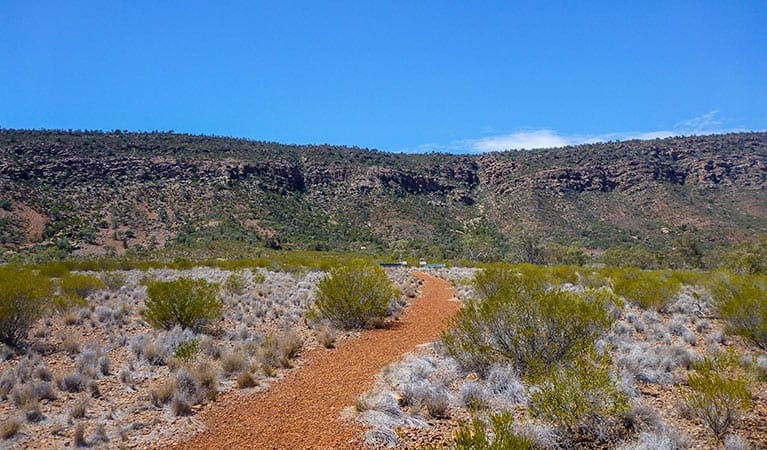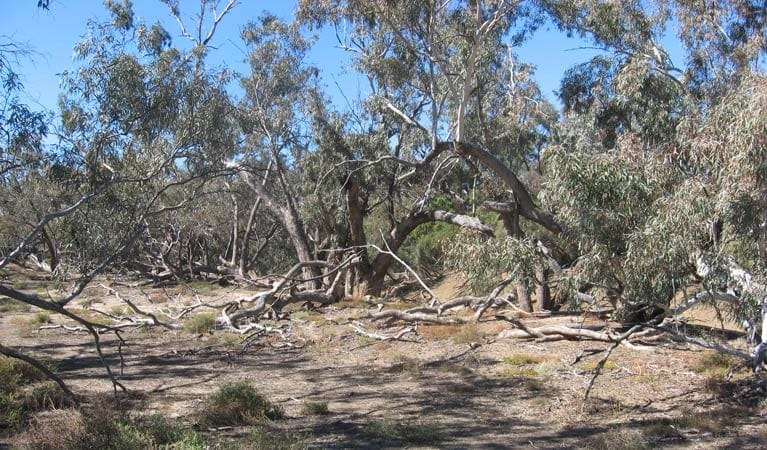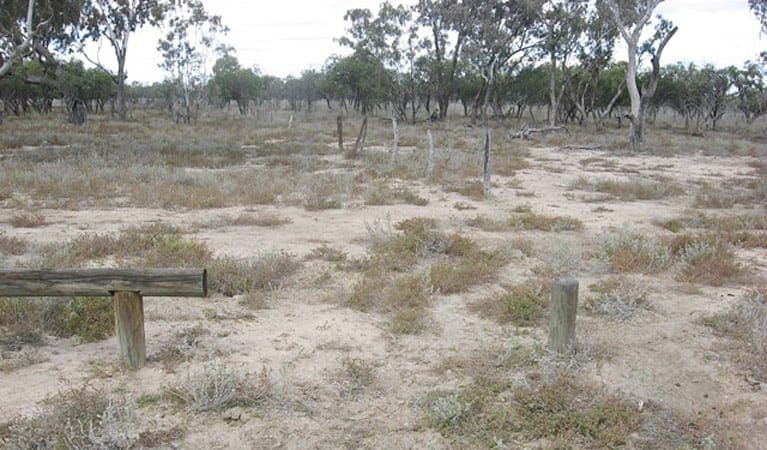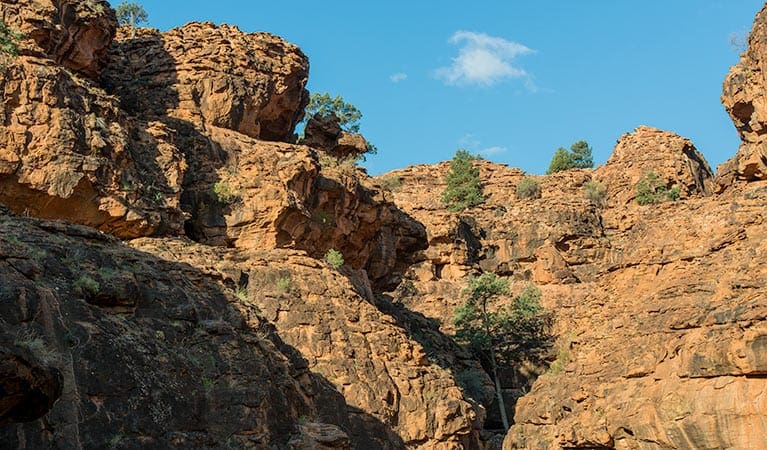Hike at a Glance
Max elevation: 0m
Min elevation: 0m
Total Ascent: 0m
Hike overview
For an outback adventure that's bound to inspire, head for Mulgowan (Yappa) Aboriginal Art site walking track in Gundabooka National Park, near Bourke. Be amazed by the fascinating Aboriginal rock art of the Ngemba and Paakandji people, set amongst unspoilt bushland. It's an unforgettable 'off the beaten track' experience for all ages.
Following this challenging yet rewarding walking track along encompassing boulders, you might see hooded robins and pink cockatoos. Arriving at the enormous rock overhang, you'll discover unique Aboriginal rock paintings that not only depict animal motifs, but dancers, hand stencils and hunting tools. The surrounding Gunderbooka Range and Mulareenya Creek is a significant area where ceremonies were held and the echoes of a vibrant Aboriginal culture can still be felt.
Take your time to soak up the tranquil setting before retracing your steps. If you're keen to explore, try Bennetts Gorge picnic area and the nearby walk or pitch your tent beneath the vast desert sky at Dry Tank campground or Yanda campground.
Take a virtual tour of Mulgowan (Yappa) Aboriginal Art Site walking track captured with Google Street View Trekker.
Gallery
Got some great shots from this hike? Upload your photos here to inspire others and show off the beauty of the trail!
Click to view form >>
Submitting your photos doesn’t mean you lose ownership. You can be credited for your contributions, and you can request removal at any time.
Content use
Please don’t copy GPX files or content from this site to AllTrails or other platforms. Each trail has been personally mapped, documented, and refined to support Australia’s bushwalking and hiking community. While some details come from land managers, every listing reflects significant personal effort. This is a free, community-driven initiative—your respect helps keep it that way.
Walk map and GPX file
It looks like I don’t have a GPX file for this trail yet. If you have one to share, please email it to me! I’ll verify it against official maps before adding it to help other hikers have a safer, easier experience. Thanks for contributing to a better hiking resource.
Getting there
Getting to the trailhead: Gundabooka National Park.
On entering Gundabooka National Park from Kidman Way, 49km south of Bourke or 160km North of Cobar, drive along Ben Lomond Road for approximately 7.5km to the Mulgowan Heritage Site entrance on the left. Turn off, then drive for about 16km to the Mulgowan Heritage Site carpark. Road quality Check the weather before you set out as the road to Mulgowan (Yappa) Aboriginal Art site can become boggy when it rains. Parking Parking is available at Mulgowan Heritage Site.
Visit NSW National Parks and Wildlife Service for more information on this trail.
The longitude and latitude of the start and end points are approximately only and should not be used for navigation purposes. Please contact me if you know the correct coordinates.
Closest towns to this walk: Bourke, Byrock, Enngonia, Louth, Nyngan, Tilpa, Wanaaring
About the region
Gundabooka National Park in the Outback NSW region
Gundabooka National Park is always open but may have to close at times due to poor weather or fire danger.
Similar walks nearby
Looking for more walks in or near Gundabooka National Park? Try these trails with a similar difficulty grade.
Track grade
Grade 5 (Difficult) - Walks for the Most Experienced: Grade 5 represents the most challenging walking tracks on the AWTGS. These are only recommended for very experienced and fit walkers with specialised skills, including navigation and emergency first aid. Tracks are likely to be very rough, very steep, and unmarked. Walks may be more than 20 kilometers. These challenging walks demand a high level of fitness and experience to navigate difficult terrain, significant elevation changes, and potentially unformed paths.
Explore safe
Plan ahead and hike safely! Carry enough water, pack layers for changing conditions, and bring safety gear like a torch, PLB, and reliable communication device. Check official sources for trail updates, closures, and access requirements, and review local weather and bushfire advice. Most importantly, share your plans with someone before you go. Being prepared makes for a safer and more enjoyable hike! Stay Safe, Explore More, and Always #ExploreSafe.
Packing checklists
What you carry in your pack depends on factors like weather, terrain, and your adventure type. Not sure what to bring? My free planning, food, and packing checklists are a great starting point, covering day hikes, overnight trips, and multi-day adventures. Use them to customise your kit and always prioritise safety.
Let someone know
Before heading out, take a moment to fill out your trip intentions form. It’s a quick way to share your hike details with family or friends. If something goes wrong, they can notify emergency services, ensuring a faster response and peace of mind. Stay safe and enjoy your adventure
Suggest an edit
Spotted a change on this trail? Maybe there are new features, the route has shifted, or the trail is permanently closed. Whatever the update, I’d love your input. Your feedback helps fellow hikers stay informed and ensures that our trail info stays fresh and reliable.
Acknowledgement of Country
Trail Hiking Australia acknowledges the Traditional Owners of the lands on which we hike and pay respects to their Elders, past and present, and we acknowledge the First Nations people of other communities who may be here today.






